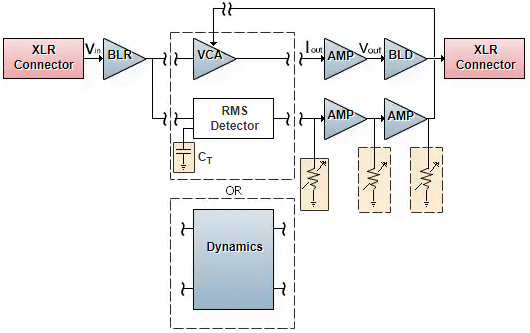Audio
Feed-Forward Compressor Limiter
Compressors are flexible products commonly used in sound recording, live sound productions and broadcast. An audio compressor is designed to “compress” the dynamic range of an audio signal by reducing the volume of loud sounds while amplifying quieter sounds. “Limiting” allows a user to prevent the output of the device from exceeding a predetermined level, and in this context it’s “limiting” the resulting sound by applying a high ratio of compression.

Feed-Forward Compressor Limiter
The signal sent to the compressor limiter is split, one copy sent to a variable gain amplifier and the other sent to the side-chain where a separate circuit controlled by the signal level applies the required gain to an amplifier stage. This is known as a “feed-forward” design and is used in most modern compressor designs. It’s also possible to design a “feed-back” compressor by applying the signal after the variable gain amplifier to control the gain stage. Typical controls on compressors include threshold, compression ratio and gain, however some audio compressors include “attack and release” settings that allow the user to control the rate at which the compression is applied or released.
This design is for reference only. The design, as well as the products suggested, has not been tested for compatibility or interoperability.